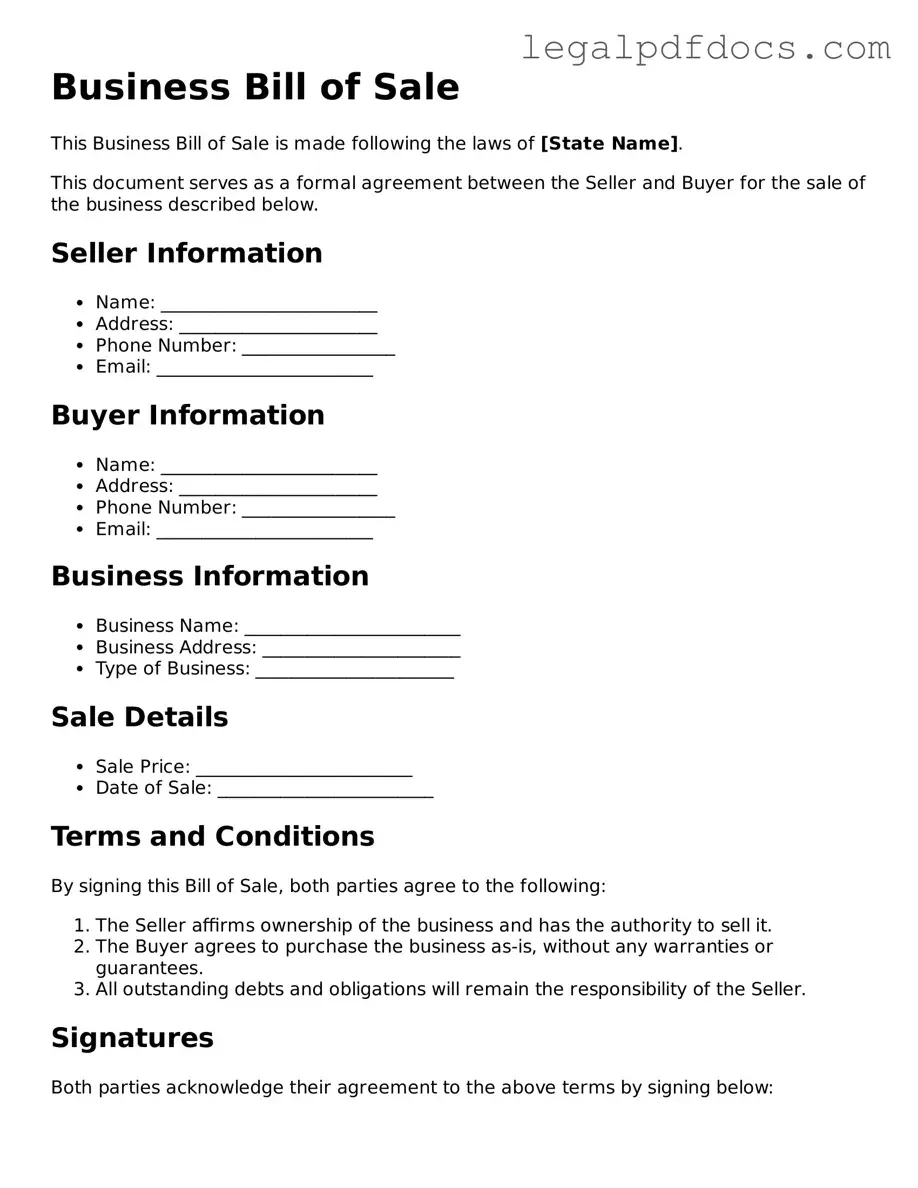Business Bill of Sale Template
A Business Bill of Sale is a legal document that records the transfer of ownership of a business or its assets from one party to another. This form serves as proof of the transaction and outlines the details involved, ensuring both parties are clear on the terms. Ready to make your business transaction official? Fill out the form by clicking the button below.
Open Business Bill of Sale Editor Here
